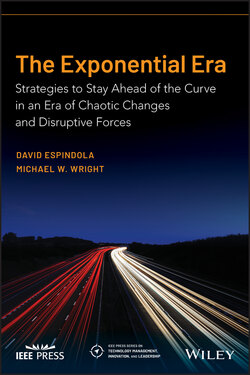Читать книгу The Exponential Era - David Espindola - Страница 16
Changing Wheels While the Car Is Running
ОглавлениеIncumbents – the current businesses that are growing profitably in their respective markets – need to be able to continue operating with excellence, maintaining their leadership positions, while concurrently seeking new opportunities in current, adjacent, or brand‐new markets. We see them as ambidextrous, able to execute both exploration and exploitation.
These companies are introducing automation, finding additional efficiencies, and seeking to gain additional share in their existing markets while at the same time discovering new opportunities that in many cases are designed to cannibalize currently profitable but eventually poorly performing businesses.
Companies that successfully navigate through the inevitable turbulence in their markets are able to balance the exploitation vs. exploration equation. Their journey is typically marked by a series of consecutive “S‐curves,” characterized by an initial period of exploration, then growth, and eventually a plateau. For instance, IBM moved through several S‐curves in its long history, starting with counting machines and typewriters, then moving into mainframe computing, client‐server software, consulting and services, and finally cloud computing (Figure I.2).
Ambidextrous organizations are able to traverse several S‐curves, from the plateau of exploitation to the initiation of exploration, because the leadership team can articulate a vision and a set of values of the company that promote a common identity, even if the culture of the exploiting business units is different than that of the exploring ones. These leaders own their ambidextrous strategy and are comfortable designing separate business units that, despite their differences, share common values, and can collectively pursue goals and objectives. They are able to allocate resources and solve conflict, while maintaining alignment with the broader goals of the organization.11
Figure I.2 Series of consecutive S curves.
